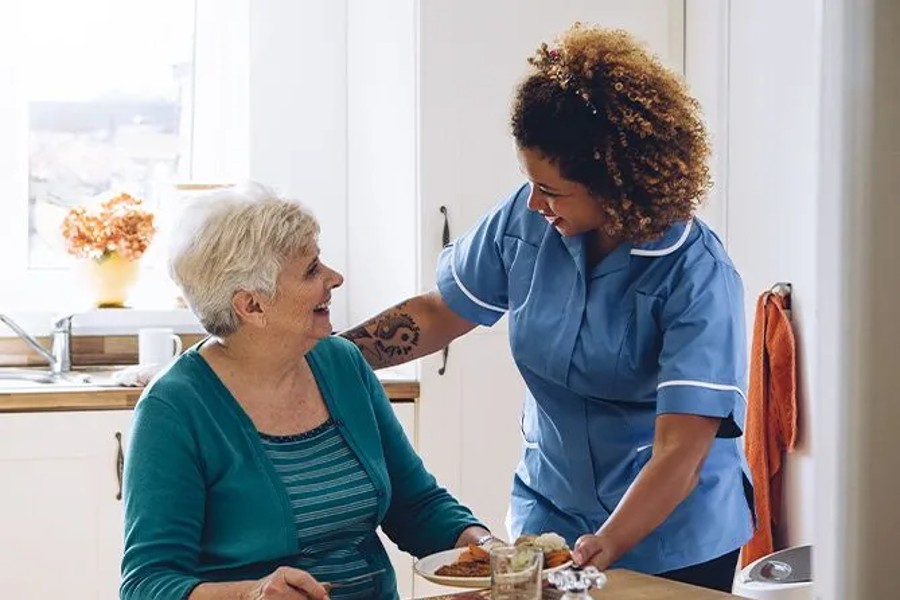
Carbohydrates are often portrayed as the enemies of healthy eating, an idea that’s been reinforced by diets like paleo and keto, which rule these macronutrients largely off-limits.
“Carbs belong to a food group that people love and love to hate for so many reasons,” says Bonnie Taub-Dix, RDN, the New York–based author of Read It Before You Eat It: Taking You from Label to Table. Because they are digested more quickly than protein and fat, carbs can have a more significant effect on blood sugar and hunger hormones, leaving you less satisfied if you eat them alone, she says.
It doesn’t help that on the whole, Americans tend to eat too many of the wrong kinds of carbohydrates. According to the Dietary Guidelines for Americans from the U.S. Department of Agriculture (USDA), carbs should make up between 45 and 65 percent of your diet, primarily from high-quality nutritional sources such as fruit, vegetables, and whole grains. But one analysis of 18 years of data from the National Health and Nutrition Examination Survey found that 21 percent of the typical American diet comes from low-quality carbohydrates, such as refined carbs, fruit juice, and potatoes, and 14 percent comes from added sugars.
This is especially troubling given that evidence shows that diets high in refined carbohydrates (like those in white rice, white bread, and white pasta) have been linked to an increased risk for chronic diseases, including heart disease, per research from 2021.
Giving up carbs entirely isn’t the solution, says Taub-Dix, since these macronutrients are our bodies’ main source of energy. Research has also linked carbs to an increase in serotonin, a brain chemical responsible for mood. “When people want to lose weight, carbs tend to be the first nutrient they slash,” says Taub-Dix. “But there’s no need to avoid them. In fact, I encourage carbs at every meal and snack.”
How? Well, make sure you’re choosing the right ones for your snacks — complex carbs like whole grains that have nutrients like fiber — and pair them with some lean protein and healthy fat for maximum satisfaction.
Here are 10 healthy carb snack suggestions to get you started.
Pear Slices With Crunchy Almond Butter

“I like combining fruit with some sort of protein because you have the benefit of the carbohydrates, fiber, and phytonutrients from the fruit, plus the healthy fat, protein, and fiber in the nut butter,” Taub-Dix says. Pears are a good choice because they contain copper, an important nutrient, per the USDA. Low levels of copper may be linked to obesity, heart disease, metabolic syndrome, and metabolic dysfunction-associated steatotic liver disease (MASLD), formerly known as nonalcoholic fatty liver disease, according to one report.
Whole-Grain Waffles With Peanut Butter

Stock your freezer with whole-grain waffles. They’re not just for breakfast — they can be a good anytime snack, especially when you pair them with peanut butter (look for natural or no-sugar-added varieties) instead of syrup. Taub-Dix says that ricotta or cottage cheese are also good toppings. Choosing whole grains in place of refined grains can help lower body weight and inflammation, according to a small, short-term study.
DIY Trail Mix With Dried Cranberries and Whole Almonds

Forget sugar-loaded, store-bought trail mix. When you make your own, you control the ingredients. Taub-Dix suggests a simple blend of dried cranberries without added sugar and almonds, which gives you fiber, natural sugar, calcium, iron, and other nutrients, per the USDA. Cranberries are good for your microbiome: Research suggests that cranberries could help maintain your digestive system.
Whole-Grain Toast With Fresh Mozzarella and a Sprinkling of Cinnamon

This was Taub-Dix’s kids’ go-to breakfast before school, and it works just as well as a snack. “The cheese has the benefit of slowing the way the bread is digested, so it gives you longer-lasting energy,” she says. A sprinkle of cinnamon adds a tasty touch. Whole-grain bread contains fiber and B vitamins, per the USDA, and whole grains may help prevent breast cancer, according to research.
Whole-Grain Crackers With Cheddar Cheese

Whole grains top the list of healthy carbohydrates, and pairing them with cheese gives you that winning combination of carbs, protein, and fat. There is some evidence that eating whole-grain foods may be associated with a reduced risk of developing type 2 diabetes, according to one review.
Rice Cake With Cottage Cheese

While you can use whatever flavor base you prefer — a brown rice cake is a more nutritious option. Pair it with cottage cheese and you get a nice, high-protein snack. One cup of reduced-fat cottage cheese contains 24 g (g) of protein, per USDA data. Additionally, a study published in 2021 found that adding a serving of cottage cheese per week reduced the risk of breast cancer in postmenopausal women.
Hummus With Fresh Veggie Sticks

Hummus with veggies gives you a one-two punch of healthy carbs. You get carbs in the chickpea base of the hummus as well as in the veggies. Taub-Dix recommends dipping baby carrots, sugar snap peas, zucchini strips, or cucumbers in your hummus. You could also spread hummus on whole-grain pita bread or whole-grain crackers. Along with protein, chickpeas contain antioxidants, can help lower high blood pressure and high cholesterol levels, and can fight cancer, according to one report.
Instant Oatmeal With a Swirl of Almond Butter

Unflavored instant oatmeal is a portable snack you can take to work — just add boiling water and swirl in some no-sugar-added almond butter. That way you’ll add the protein and healthy fat that will keep you feeling full longer and help keep your blood sugar in check. Oats are a nutritional powerhouse. They may lower cholesterol levels, protect against diabetes, improve your microbiome, and help reduce the risk of cancer, according to a review published in 2021.
Whole-Grain Cereal With Greek Yogurt and Nuts

Taub-Dix recommends choosing a cereal with whole grains as the first ingredient and no more than 5 g of sugar per serving. If you prefer the taste of a sweeter cereal, her trick is to combine it with a very low-sugar cereal like Cheerios. Adding the Greek yogurt and nuts balances out the carbs in the cereal with protein and healthy fat. Reach for a cereal with oats or barley, since whole-grain oats and barley can reduce your risk of heart disease and type 2 diabetes, according to one report.
Grab-and-Go Snack Bar

If you want to have a healthy snack on hand when you’re out and about, a packaged snack like a Kind bar can do the trick. You can keep one in your bag or desk drawer, and it’s portion-controlled, so you don’t have to worry about overdoing it. Taub-Dix says to look for one that’s low in sugar (no more than 5 g per serving) and provides fiber (at least 7 g), protein, and healthy fat. Plus, a link between fiber intake and reduced symptoms of depression has been found in observational studies, according to one review wrote EveryDay Family.
Photo credit: Family Features.
Editors Note: Do send your ideas to eat health and live a healthy life and style.
Become a Harlem Insider!
By submitting this form, you are consenting to receive marketing emails from: . You can revoke your consent to receive emails at any time by using the SafeUnsubscribe® link, found at the bottom of every email. Emails are serviced by Constant Contact








